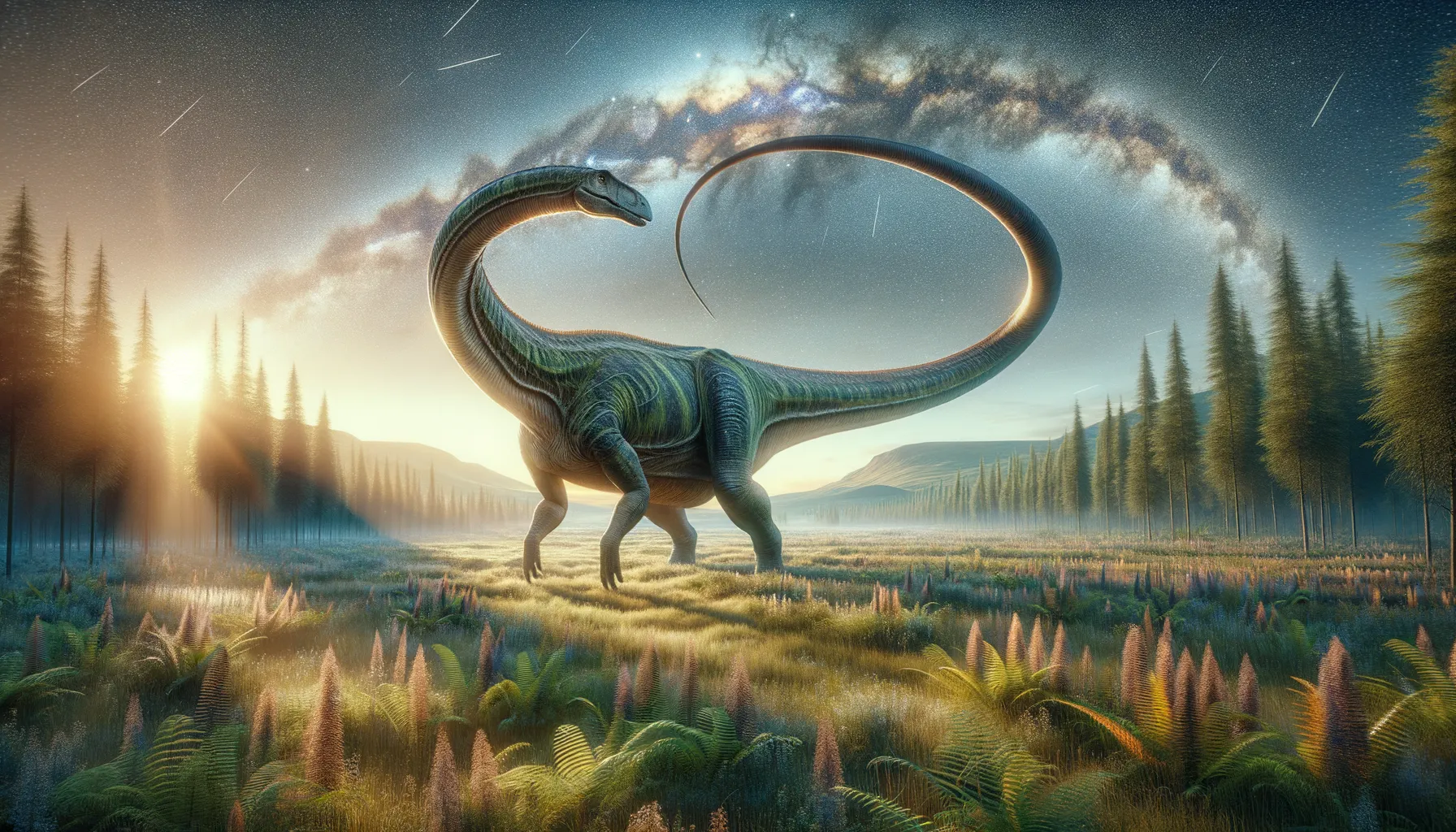
Tastavinsaurus
Giant of the Cretaceous landscapes.
Period
Cretaceous
Length
About 60 feet long from head to tail.
Height
Stood approximately 30 feet tall.
Weight
Estimated to weigh around 15 to 20 tons.
Tastavinsaurus was a massive sauropod dinosaur that roamed the Earth during the Early Cretaceous period. Known for its colossal size and long neck, it was among the titans of its time. This herbivore consumed vast amounts of vegetation to sustain its growth. Fossils of Tastavinsaurus have helped researchers understand the diverse and adaptive nature of dinosaurs in prehistoric ecosystems.
Diet
Tastavinsaurus was a herbivore, feeding mainly on plants. Its long neck allowed it to reach high vegetation, making it capable of consuming foliage from trees and tall shrubs.
Hunting
As a herbivore, Tastavinsaurus did not hunt. It likely foraged for food in lush, vegetation-rich environments and used its long neck to access a wide range of plant materials.
Environmental challenges
Tastavinsaurus faced competition for food with other herbivorous dinosaurs. Climate changes and natural disasters like floods or volcanic activity may have posed threats to its survival. Additionally, it had to be wary of large predators that roamed the same regions.
Speed
Relatively slow-moving due to its massive size.
Lifespan
Likely lived for several decades.
First discovery
Discovered in Spain in 1998 by a team of paleontologists.
Fun Facts
- Tastavinsaurus was a long-necked dinosaur that lived during the Early Cretaceous period, around 125 million years ago.
- Its fossils were discovered in Spain, specifically in the Teruel province, providing insights into the dinosaurs that roamed Europe.
- Tastavinsaurus was a sauropod, meaning it was part of the group of large, plant-eating dinosaurs that walked on four legs.
- This dinosaur was named after the nearby Tastavins River in Spain, which highlights the significance of local geography in paleontology.
- Despite its massive size, Tastavinsaurus was a gentle giant, feeding on plants and possibly using its long neck to reach high vegetation.
- Scientists believe Tastavinsaurus may have traveled in herds, providing protection from predators for both young and adult dinosaurs.
- The discovery of Tastavinsaurus has helped researchers understand the diversity and distribution of sauropods in ancient Europe.
Growth and Development
Tastavinsaurus likely hatched from eggs and underwent significant growth over many years. It required vast amounts of food and water to support its massive size. Juveniles were vulnerable to predators until they grew large enough for their size to be a deterrent.
Habitat
It inhabited regions with abundant vegetation, such as forests or floodplains. The lush environment provided ample food sources essential for sustaining its large size. Tastavinsaurus likely migrated to find sufficient food and resources.
Interaction with other species
Tastavinsaurus shared its environment with various other herbivores and carnivores. It may have formed herds for better protection against predators. Its sheer size likely deterred smaller predators, but it could have been prey for the largest carnivorous dinosaurs.
Natural lifespan
Its natural lifespan was probably several decades, depending on environmental conditions and predation.
Reproduction
Reproduction was likely through laying eggs in nests. Females may have laid numerous eggs to ensure that at least some offspring survived to maturity. Parental care details remain unknown, but young may have had some protection from adults.
Social behaviour
Tastavinsaurus may have exhibited social behaviours, possibly living in groups or herds. This social structure could have provided protection from predators. Communication might have included vocalizations or other signals to maintain group cohesion.
Fossil locations
Fossils of Tastavinsaurus have been primarily found in Spain. These discoveries have contributed to the understanding of sauropod distribution across Europe during the Early Cretaceous. They help illustrate the diversification of dinosaurs in European ecosystems of that era.
